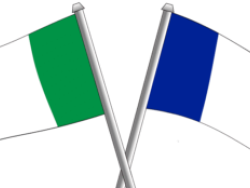
French vs Italian Bread – What’s The Difference?
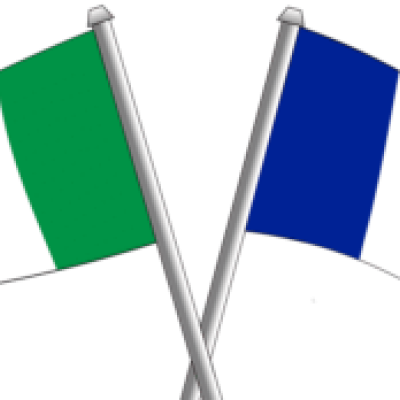
French bread vs Italian bread is a contested topic for bread bakers and bread eaters, with strong arguments for which is the best! France and Italy have the western world’s deepest bread culture and heavily influence the bread eaten in English-speaking countries such as the USA, Britain and Canada. So French and Italian bread, what is the difference and which is better? Well, let’s take a look.
Why is Italian and French bread so good?
Italy and France have created many of the world’s most popular types of bread. From the baguettes and brioche of France, to the ciabatta and panettone of Italy. These countries own the birthright of many of the most popular recipes.
The skill of baking bread is highly regarded in these countries. This, in my opinion, is because civilians recognise and celebrate the standards and innovations their bakers achieve. Good quality bread is synonymous with national celebrations.
The standards of bread are taken seriously in both countries. If a bakery sells products that are not as good as its competitors, no matter how cheap, locals will not buy them. This then asks the question of food prices in western nations.
The cost of living is so high in the UK and the USA that saving money on food by buying mass-produced, low-cost foods (including bread) has become normalised to keep up with other bills and activities in a way that has not been experienced in Italy and France.
This culture has made these countries the most important in the bread world and retains their status in the 21st century.
French vs Italian bread, which is better?
From an outsider, there is a clear competition between the two nations for having the best bread. There has been a bit of copying between each nation’s famous varieties of bread, which you’ll understand as we go through the types of bread each has to offer.
Both countries seem to believe they have the world’s leading bread bakers! Who’s right? Let’s find out!
French bread culture

French bread is a serious upgrade to supermarket offerings in the Uk and the US. Independent bakeries litter the high streets in France. The standard is so high that bakeries close down, which would have long queues in the UK! Bakeries or “Boulangeries”, as they are called in France, offer fantastic bread, nearly always hand-made on site.
What’s the difference between Boulangeries and Pâtisseries?
Boulangeries tend to feature a pâtisserie counter as well. These are beautiful cakes that I can only find in the expensive parts of London. Pâtisseries tend to sell bread as well. If you want to be renowned for your bread, you would class yourself as a Boulangerie and vice versa for Pâtisseries.
Are there more Bakeries In France?
France has over 30,000 boulangeries, one for every 2,000 people (credit Quora). To compare, there are 500 in Britain (credit Craft Bakers Association).
The ingredients used by French bread bakers
French bakers do not use much other than flour, water, salt and yeast in their bread. For sweet bread, sugar, honey and butter are included.
French bread baking focuses on traditional techniques and the maximisation of flavour from simple ingredients. Using chemicals, pre-mixes, and enzyme-based dough improvers is pretty unheard of.
French bread is governed by French law, which protects the authenticity of the products and promotes a high standard of bread. It is not as strict as many outsiders believe, as some bread improvers are allowed, providing the bread is labelled with the correct title. The bread is then awarded a title depending on the ingredients it contains and the equipment used to make it.
Bread is eaten at any time of day in France. For breakfast, lunch, as a sandwich, with a meal, a snack, with coffee, whilst sitting on the bus… There is no time of day when eating bread is inappropriate!
French bread types
Here’s a selection of the most popular French bread and what makes them special.
Baguette

When I think of French bread, I first think of the national bread, the baguette. It’s so prominent in France that I was shocked how one bread is such a factor in daily life – and yes, the French people really walk the streets with a baguette (or two) tucked under their arm!
The history of the baguette is interesting. Baguette popularity originated in post-war Paris and has grown across the world.
The difference between French baguettes and those made outside France is quite staggering. In the US, “French bread” is a baguette-like Vienna roll style of bread. It’s a very poor representation of French bread. In the UK, “French sticks” are white bread recipes shaped into a long shaped and baked on fluted trays.
To find an authentic French baguette without going to France, you must visit an artisan bakery or bake your own, see my authentic french baguette recipe with poolish to find out how to make artisan baguettes!
Brioche

A famous French bread is Pain Brioche, a sweet bread packed with eggs, sugar and butter. They are made with a lot of skill and expense, as shaping Brioche is notoriously tricky and often left to the head baker to complete. See how brioche compares with other French breads in the best bread to make French toast.
Croissant

Though it’s argued that croissants come under viennoiserie, croissants are still a type of French bread. Made from layers of dough sandwiched with butter to create a flaky, layered pastry, croissants are delicious. The same dough can be used to make pains au chocolat, palmiers and new york rolls.
Sourdough bread

Pain au Levain is the traditional French bread made with sourdough levain. It uses French flour and can be found in many sizes, yet the most popular is the boule shape. Pain au levain is lightly baked compared to US sourdough, and do not expect blisters on the crust surface in France.
Country bread

The Pain de Campagne is the “bread of the countryside”. It is made using wholemeal flour and a rye sourdough levain.
Pain Campaillou
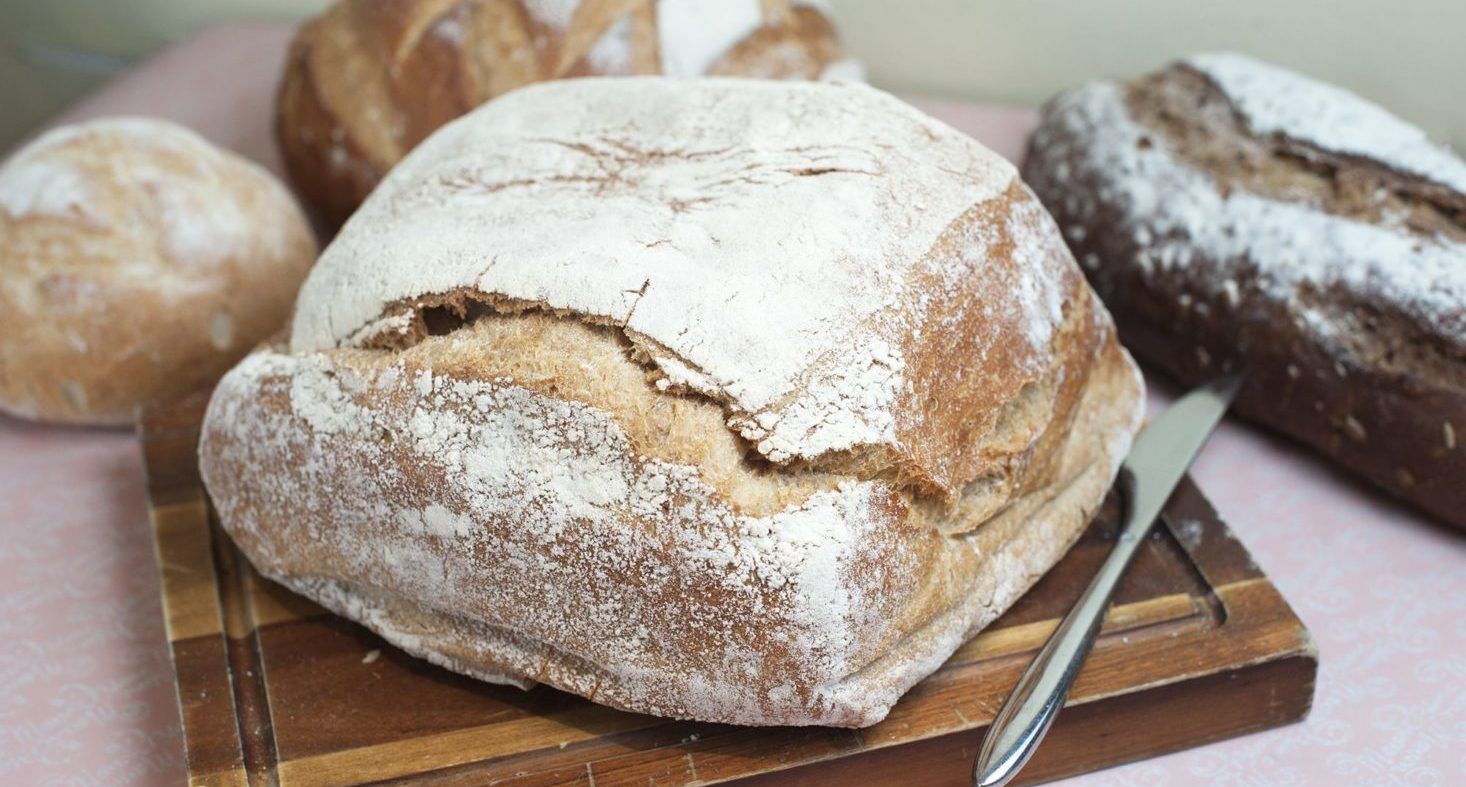
A lesser well-known bread which is one of my favourites, is Campaillou. A rustic French bread made using special flour from the Campaillou region. It’s similar to the Italian Pane Casericcio.
Ficelle

Ficelle is a thinner baguette-style bread, usually made for sandwiches.

Italian bread and bread culture
Bread made in Italy also covers various styles, from sweet to savoury, just like the French. Like the personality of Italian people, the bread tends to be relaxed and rustic or extravagant showpieces – no in-between!
The ingredients used by Italian bakers
Italy has a climate for growing a vast variety of perfect crops. If a crop prefers sunlight, warmth, cool winds or hillsides, there’s a good chance there’s an area in Italy perfect for growing the most vibrant harvest. The diverse range of perfect ingredients makes Italy one of the best places in the world for food.
Besides flour, water, salt and yeast, adding some of the country’s fantastic ingredients to white bread dough is common in Italy. Examples include focaccia bread, pizza and olive bread. Semolina, olive oil, herbs, potato, tomato, honey, sugar and milk are either added to the dough during mixing or used as toppings.
As the climate is warmer, Italian wheat has a high protein content and is ground finer than other flours. The flour is typically low in hypodiasticity, meaning malt flour is routinely added to long-fermented bread recipes to support yeast fermentation.
How is bread eaten in Italy?
Italians use bread to make sandwiches, an antipasto starter or an accompaniment to a course. Similarly to France, sweet Italian bread can be eaten with coffee.
Italian bread types
Let’s look at a few of Italy’s most popular types of bread!
Focaccia
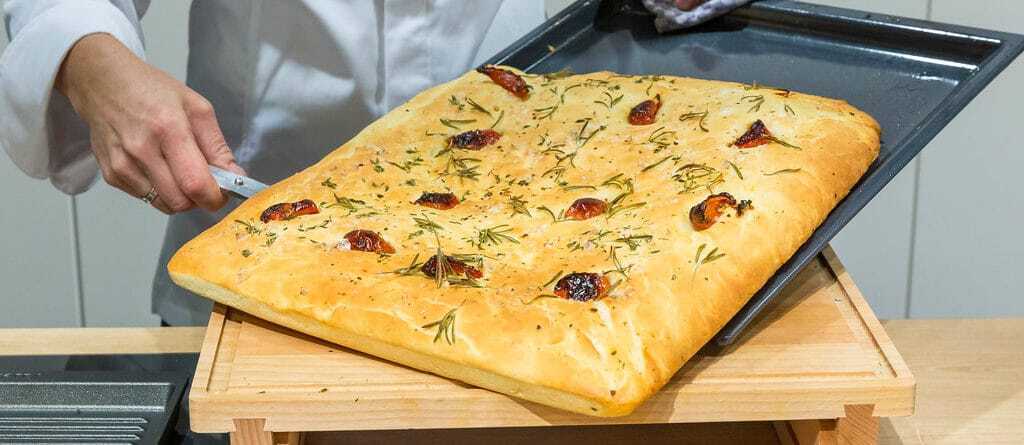
Italian focaccia is a white bread dough baked in flat stone ovens in a tray containing so much olive oil it’s practically fried! It’s often topped with roasted vegetables, cheese and herbs.
There are several styles of focaccia that we don’t often see outside Italy. In Roma, focaccia is thin and crispy. Some regions make mighty thick focaccia with generous layers of toppings. Try my focaccia recipe with biga to make some focaccia yourself.
Ciabatta

The ciabatta was designed to rival the baguette for making sandwiches. The Italians were angry about the baguettes’ success and wanted an individual sandwich bread of their own. The word Ciabatta translates to “slipper” in English.
Ciabatta has large amounts of biga preferment and extra virgin olive oil, giving it its unique open, irregular crumb. You can view my ciabatta recipe with biga in the bread recipes section. It’s perfect for dipping in sauces!
Panettone
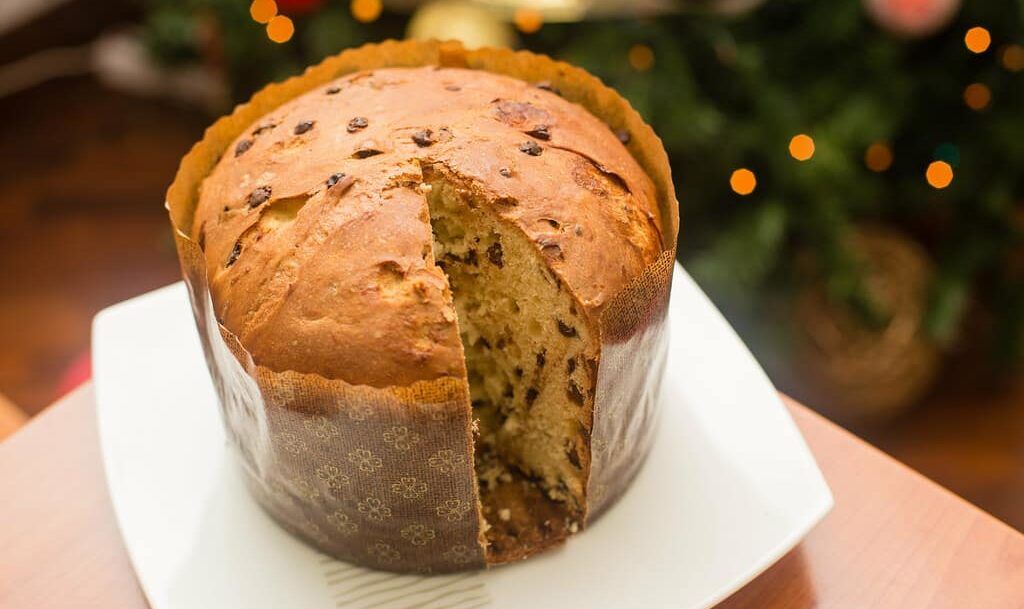
Panettone is a sweet, extravagant bread made with an aged Motherdough levain method for Christmas. It’s based on the French brioche with the addition of dried fruit, alcohol, eggs, butter and vanilla!
Stirato & Sfilatino
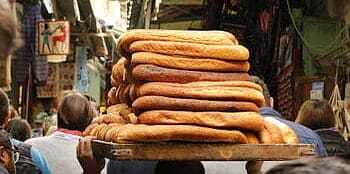
Italian bakers created their version of the baguette called Stirato and Sfilatino’s. One is longer than the other. They are pretty much the same, only softer.
Sicilian Brioche
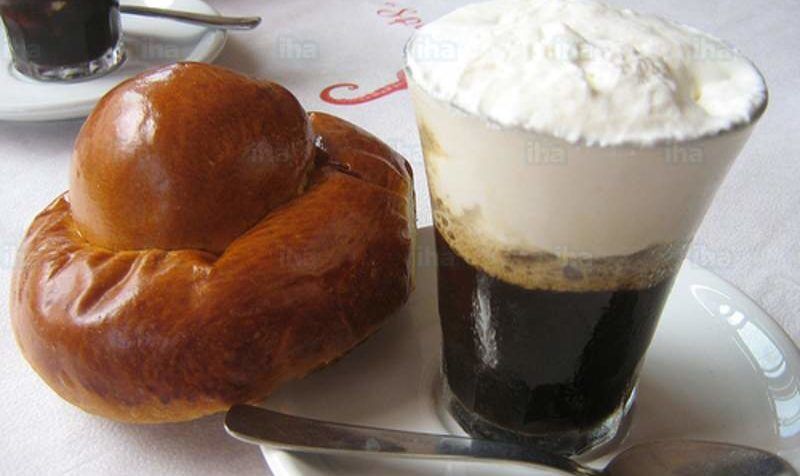
They also have a version of French Brioche. Italian brioche is softer and baked without a case. Instead, Sicilian Brioche is proofed on baking sheets. Try my soft Italian brioche recipe to make some yourself.
Cornetti

Italy’s take on the Croissant, Cornetti, is regularly filled with vanilla or chocolate cream.
Pane Rustico
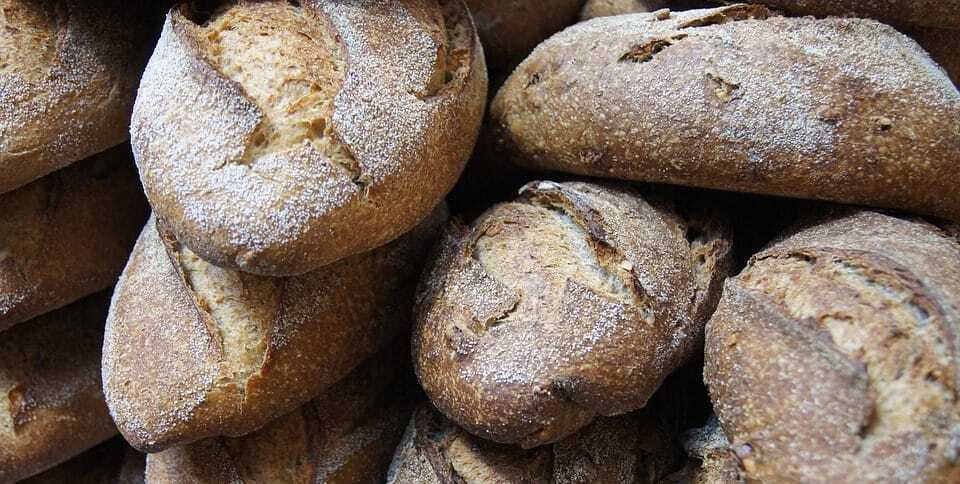
In English, Pane Rustico translates as “peasant bread”. It is a rustic bread that can be made with sourdough or yeast and is popular in many regions of Italy.
Matera bread

A Pane di Matera is an Italian bread made with semolina.
Pane casareccio

The pane casareccio is one of my favourites and is a rustic bread popular in the region of Puglia. Try this rustic Italian bread recipe. You won’t be disappointed!!
Pizza blanco

This “white” pizza style is made without tomato sauce and contains white cheese and usually a vegetable topping.
Neapolitan pizza

Possibly the most widespread Italian bread of all is Neapolitan Pizza. The pizza dough is slowly fermented over two days and topped with tomato sauce, mozzarella, and (sometimes) a pinch of Parmigiano-Reggiano. Other toppings can be added (just not pineapple!). Belonging to the Naples area, this style of pizza has a light, fluffy crust owed to baking at a high temperature.
Pizza Roma
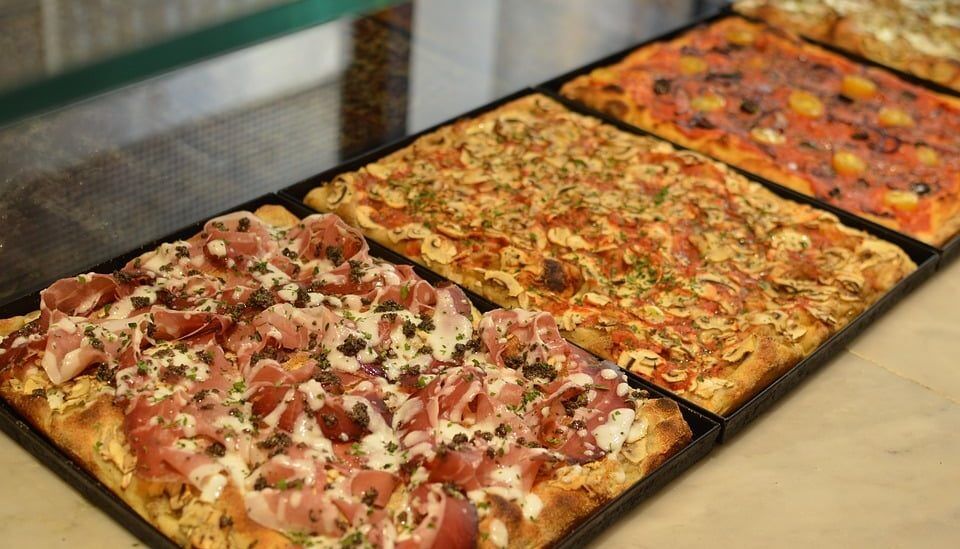
Pizza from Roma is more about the toppings than Neapolitan pizza. It has a thin, chewy crust baked at a slightly cooler temperature than Neapolitan pizza. Often sold per slice, similar to Italian focaccia.
How French and Italian bread compares
There are similarities in the passion, quality and popularity of each nation’s bread, but there are also many differences between French bread and Italian bread. Here’s what I believe makes them different:
Differences in bread taste and texture
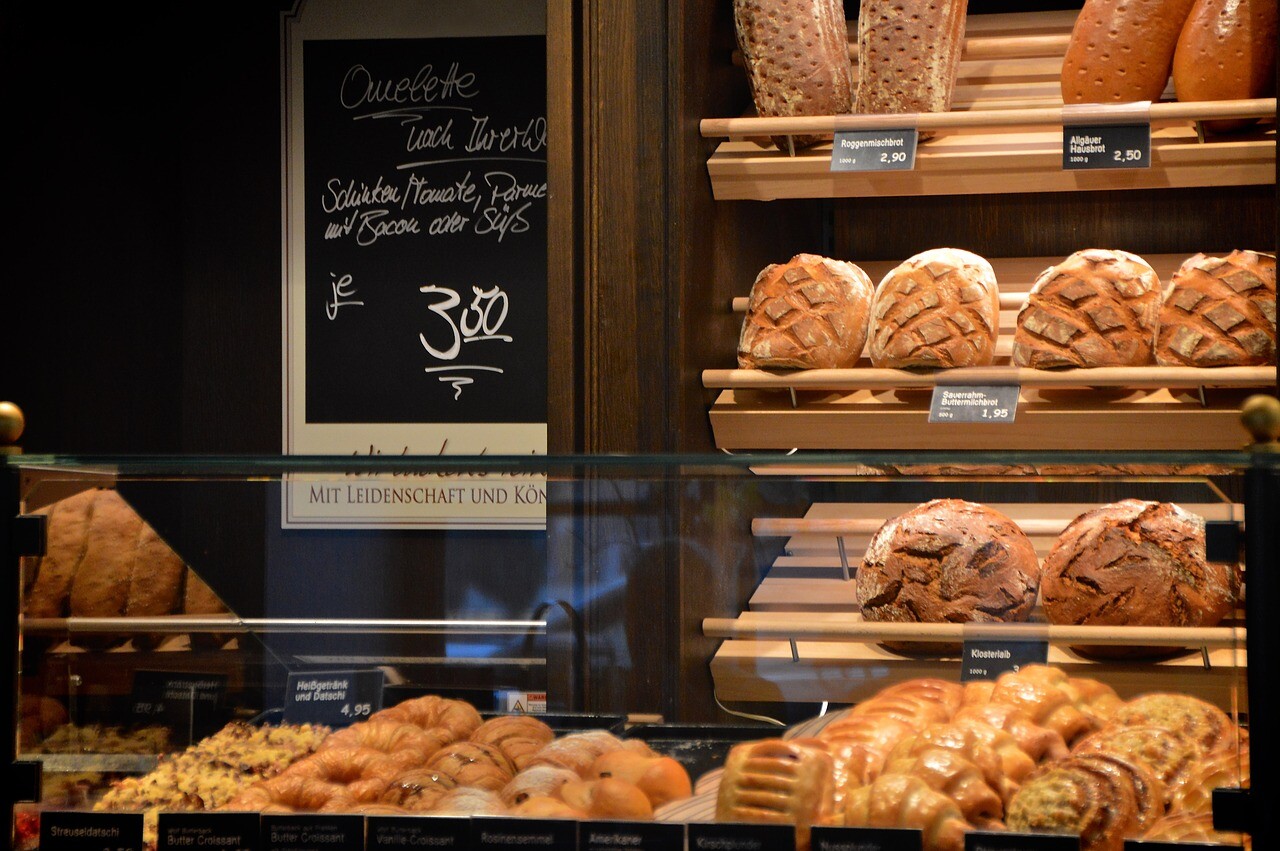
The crust texture contains one of the biggest differences between French and Italian bread. French bread has a thick, crunchy crust with a light crumb, obtained by cooler oven temperatures and longer baking times.
Italian crusts are more tearable and thin, often with a bit of blackening due to the higher baking temperatures and the higher protein flour. Short baking times mean the crumb texture remains soft and light.
Italian bread often uses herbs and olive oil to flavour the bread. These give bread another dimension of flavour and variety. French bread flavours focus on quality and technique, a little less on innovation.
It’s common for savoury Italian bread to contain fat and sweeteners. This could be because their flour makes naturally chewy bread. Ingredients such as olive oil, sugar, or honey tenderise the gluten to make it softer.
Fat also lowers the acidity of the bread and lubricates the bread, which keeps the bread fresher for longer. For this reason, Italian bread tends to stay fresh longer than French.
Baguettes that contain no fat are baked 2-4 times a day to be consumed fresh. Large French bread will stay fresh longer, but not as long as bread containing fat.
That said, the French have some of the softest bread. Brioche and Pan de mie are packed with milk and butter, creating lovely soft bread. French sweet bread is as soft as bread can get
French vs Italian bread baking methods
Not only is the philosophy and ingredient choice slightly different in both countries, the equipment and methods in baking change too.
French bakers use flour, water, salt, and yeast or sourdough when making everyday bread. They will not add milk, butter, oil or hydrogenated fats to their dough unless they make a style of sweet bread that requires them. French bakers will not use oil in bread baking unless frying. Butter is preferred.
Preferment dough features in both Italy and France. This is an aged portion of dough included in the recipe for enhanced dough maturity. This reduces fermentation time and aids flavour and keeping quality.
In France, a poolish is the preferred preferment, whereas Italian bakers will use a biga. The poolish originated from Polish bakers and has been adopted by the French. It contains the same flour-to-water ratio with around 0.25% yeast. Biga’s are more flavourful, often thicker, containing less water and around 0.5% yeast. For more information about preferments, view the what is a levain article.
Differences in sourdough bread in France and Italy

Bakers in both countries use sourdough. French bakers follow a refreshment of flour, water and sourdough in equal (or roughly equal) quantities. The Italians made it one step better (or more complicated) and have an aged mother dough that uses honey to activate it. They also use the lievito madre method, which involves wrapping the stiff starter in cloth and soaking it in water.
Differences in the ovens used by French and Italian bakers

French bakers use electric stone-baked steam ovens. In Italy, more wood-burning ovens are still in use. Wood burners operate at much higher temperatures than most electric ovens. A higher baking temperature is necessary for pizza and making bread with a dark crust and soft crumb. They heat to at least 400C (750F) when making pizza.
The high temperature that wood burners create also helps to create rustic, irregular crusts that appear on several Italian loaves of bread. A slight smokiness flavour is added to the bread when using wood-burning ovens.
How bread is sold in France and Italy
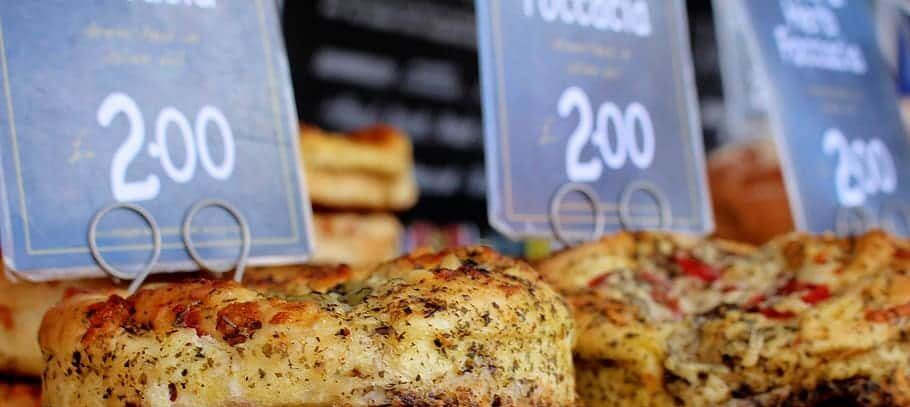
The size of bread available in local bakeries is different in each country. Italian bakers tend to produce larger pieces of bread, priced per kilo instead of per loaf. This way, customers can buy a whole loaf or smaller portions. Otherwise, bread is sold with a sandwich filling or in focaccia slices. In France, the size of the bread is smaller and sold per loaf.
Ending thoughts on the differences between French and Italian bread
Before I come to my final decision of which is better, French or Italian bread, a few final comments. Both countries make bread to eat with food, bread to make sandwiches, bread to snack with and sweet bread. They are very similar. However, French bread is generally the same nationwide, whereas Italian bread has more variety across regions. Areas like Sicily have their bread style, as do Puglia and Rome.
Despite being neighbours, Italians don’t like eating French bread. Be it jealousy or a search for perfection. Italian bakers habitually tweak French recipes to make them Italian. French recipes such as Brioche, Baguettes, Pan Rustique and Croissants all have an Italian equivalent.
The growing conditions of wheat flour inspire Italian bread to be sweeter, lighter and thin-crusted. French bread is more flavourful and rich.
French bread law has prevented the deterioration of quality that’s occurred in other countries, but Italy, without such legislation, has also kept up. Perhaps the lack of legislation has enabled Italian bakers to innovate their products.
French vs Italian bread, which do I prefer?
I have to say I slightly prefer Italian bread. It’s rustic and chewy, perfect for dipping into sauces. I love it! I do, however, love practising the art of French bread and learning the classics. Making a perfect batch of baguettes gives me enormous satisfaction. I could do it all day!
If you’ve enjoyed this article and wish to treat me to a coffee, you can by following the link below – Thanks x

Hi, I’m Gareth Busby, a baking coach, senior baker and bread-baking fanatic! My aim is to use science, techniques and 15 years of baking experience to make you a better baker.
Table of Contents
- Why is Italian and French bread so good?
- French vs Italian bread, which is better?
- French bread culture
- French bread types
- Italian bread and bread culture
- Italian bread types
- How French and Italian bread compares
- Ending thoughts on the differences between French and Italian bread
- French vs Italian bread, which do I prefer?
Related Recipes
Related Articles
Latest Articles
Baking Categories
Disclaimer
Address
53 Greystone Avenue
Worthing
West Sussex
BN13 1LR
UK







